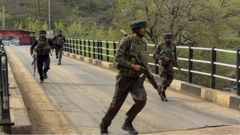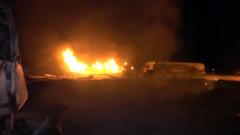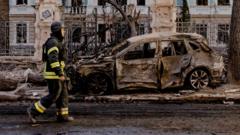A man rammed a truck into a crowd in New Orleans, resulting in significant casualties and prompting investigations into the incident as a potential act of terrorism. Authorities emphasize growing concerns about vehicle ramming attacks as a tactic favored by extremists.**
New Year’s Day Tragedy: Vehicle Ramming Attack in New Orleans Claims Lives**

New Year’s Day Tragedy: Vehicle Ramming Attack in New Orleans Claims Lives**
A deliberate vehicle attack in the French Quarter leaves 10 dead and 30 injured, reigniting discussions on the rising trend of vehicle-based terrorist tactics.**
At least 10 individuals were killed and over 30 injured in a tragic incident in New Orleans on New Year’s Day when a driver intentionally drove a pickup truck into a crowd on Bourbon Street. Local officials have classified the incident as a possible act of terrorism amid increasing scrutiny over the use of vehicles as weapons in violent attacks.
This assault represents a continuation of a disturbing trend where vehicles are employed to inflict harm on unsuspecting pedestrians. Historically, vehicle ramming did not originate as a terrorist tactic, but it has increasingly been appropriated by extremist groups and radical individuals aiming to cause chaos and terror.
The choice of vehicles as instruments of violence can be attributed to their accessibility across the globe, making it easy for attackers with minimal resources or training to execute harmful acts. According to insights from the FBI, vehicles serve as lethal weapons that can inflict significant casualties while allowing "marginal actors" the means to attack densely populated urban areas.
Research from criminologists has characterized the transformation of everyday vehicles into tools of terror as a strategic psychological tactic. The commonality of such attacks has sparked a complicated discussion surrounding prevention, with authorities debating measures to better secure public spaces.
As investigations unfold, the broader implications of this attack resonate deeply, highlighting a growing societal vulnerability to these types of crimes, prompting further examination into how communities can effectively safeguard against future acts of terror.





















